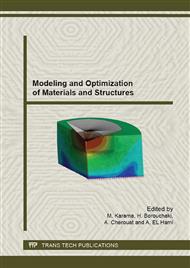p.9
p.17
p.25
p.32
p.37
p.41
p.44
p.52
p.61
Concept of the Tip Effect in Single Walled Carbon Nanotube
Abstract:
In this investigation, we reported that single walled carbon nanotube can act as a sharpest tip where the electric field strength is highly concentrated at the edge. Therefore, we study the effects of the physical and geometrical parameters of an applied electric field gradient to various electrode structures. Results showed that carbon nanotubes presented a strongest electric field value at the edge which makes them suited for applications as unidirectional electric field or serving as nanoelectrode with a diameter of about one nanometer to be used for conductivity nanotest and to determine the electrical properties of single molecules or clusters.Keywords: single walled carbon nanotube, nan-electrode, tip, electric field lines, surface charge density.
Info:
Periodical:
Pages:
37-40
Citation:
Online since:
April 2015
Authors:
Price:
Сopyright:
© 2015 Trans Tech Publications Ltd. All Rights Reserved
Share:
Citation:


